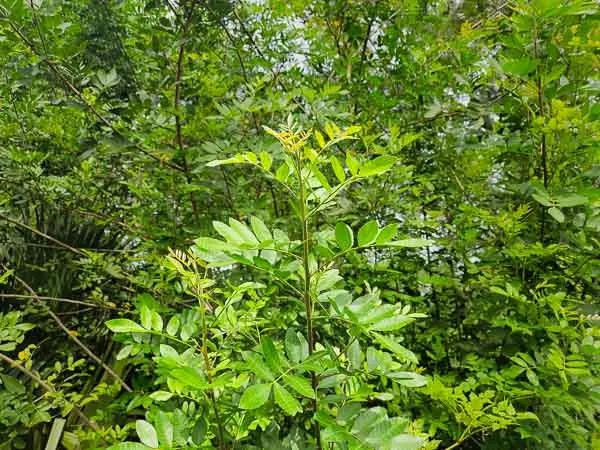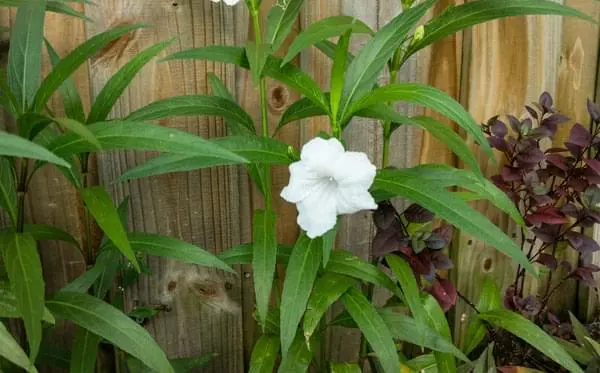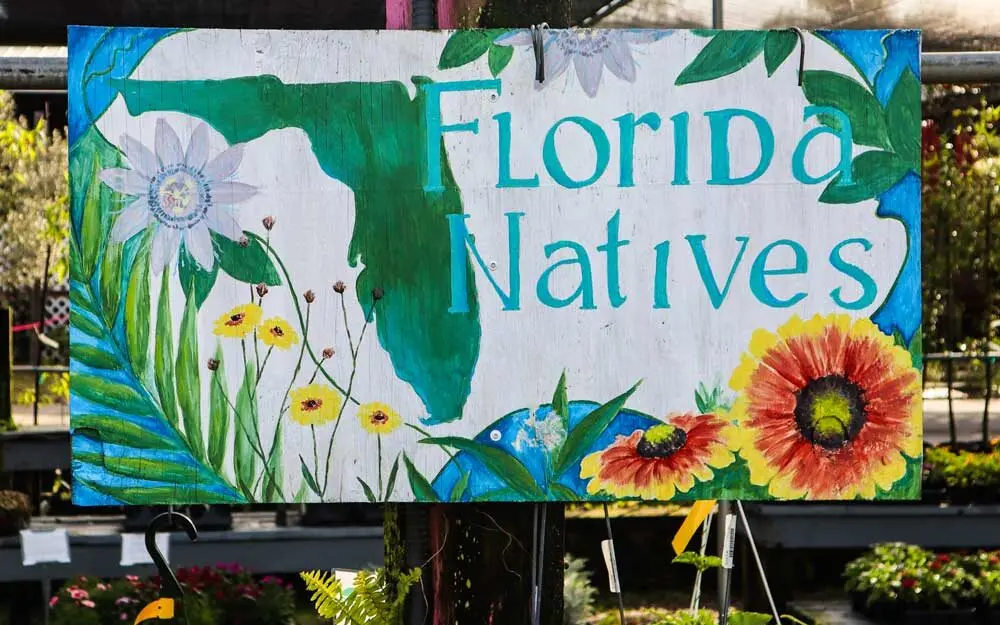By Amanda Rose Newton
Florida is renowned for its rich biodiversity and lush landscapes. However, this vibrant environment is under constant threat from invasive plant and insect species. These uninvited guests can wreak havoc on local ecosystems, outcompeting native species and causing significant damage to your landscape.
In this week’s post, we’ll explore what makes a plant or pest invasive, why they are problematic, and how to manage them effectively in Florida.
What is an Invasive Plant Species?
An invasive plant species is a non-native plant that spreads rapidly, outcompeting native vegetation and disrupting local ecosystems. These plants often lack natural predators in their new environment, allowing them to proliferate unchecked.
Examples of invasive plants in Florida include:
Brazilian Pepper Tree (Schinus terebinthifolia): This aggressive plant forms dense thickets, displacing native flora and altering habitats.

Old World Climbing Fern (Lygodium microphyllum): Known for smothering trees and shrubs, it can spread rapidly through wetland and upland areas.
Cogongrass (Imperata cylindrica): This grass invades forests, pastures, and roadsides, posing a significant fire hazard due to its highly flammable nature.
Common Invasive Plants Sold at Garden Centers
In the quest to beautify our gardens and landscapes, many homeowners and gardeners turn to ornamental plants available at local garden centers. While these plants can add aesthetic value and charm to any outdoor space, some of them come with hidden dangers.
Invasive ornamental plants, often chosen for their hardiness and fast growth, can escape cultivation and spread uncontrollably, wreaking havoc on local ecosystems. These invaders outcompete native species, reduce biodiversity, and disrupt natural habitats.
In Florida, where the climate allows for a variety of plant species to thrive, the issue of invasive ornamentals is particularly pressing. Understanding which plants pose risks and choosing native or non-invasive alternatives can help protect our environment while still creating beautiful, thriving gardens. If you really want one of the below, consider keeping it in a pot to reduce spread potential.
Examples of Invasive Ornamentals:
Mexican Petunia (Ruellia simplex):Known for its vibrant purple, pink, or white flowers, Mexican Petunia is a popular choice for adding color to gardens and landscapes. This plant spreads aggressively through seeds and underground rhizomes, forming dense stands that outcompete native vegetation and disrupt ecosystems.

Heavenly Bamboo (Nandina domestica): Also known as Nandina, this plant is popular for its bright red berries and evergreen foliage, often used in landscaping and garden designs. Spreads through both seeds and root suckers, forming dense thickets that outcompete native plants and can be toxic to birds and other wildlife.
Umbrella Tree (Schefflera actinophylla): Also called the octopus tree, the Umbrella Tree is admired for its large, glossy leaves and striking appearance.
It produces numerous seeds that are easily dispersed by birds and wind, allowing it to invade natural areas and displace native plants.
Asparagus Fern (Asparagus aethiopicus): This plant is commonly used as an ornamental ground cover or in hanging baskets, valued for its delicate, feathery foliage.
Asparagus Fern spreads through tubers and seeds, forming dense mats that smother native vegetation and are difficult to eradicate.
Camphor Tree (Cinnamomum camphora): The Camphor Tree is a large evergreen tree often used for shade and ornamental purposes, known for its glossy leaves and fragrant wood. Camphor trees produce numerous seeds that are dispersed by birds, allowing them to spread rapidly and form dense stands in natural areas.
What Makes an Invasive Pest?
Invasive pests are non-native species that establish themselves in new environments, often causing ecological and economic damage. These pests can harm native plants, crops, and even human health. Key traits of invasive pests include high reproductive rates, broad host ranges, and a lack of natural predators in their new habitats.
Notable invasive pests in Florida include:
Asian Citrus Psyllid (Diaphorina citri): This tiny insect spreads citrus greening disease (huanglongbing), devastating Florida’s citrus industry.
Red Imported Fire Ant (Solenopsis invicta): Known for its painful sting and aggressive behavior, it disrupts native wildlife and human activities.
Giant African Land Snail (Achatina fulica): This invasive mollusk poses a significant threat to agriculture and human health by consuming a wide range of plants and carrying diseases.
Why Are They Invasive?
Invasive plants and insects become problematic because they can outcompete native species for resources such as light, water, and nutrients. They often reproduce quickly and have few natural predators or diseases in their new environment, giving them an unfair advantage.
This imbalance can lead to:
Biodiversity Loss: Native species decline or disappear, reducing biodiversity and altering ecosystems.
Economic Impact: Agriculture, forestry, and fisheries suffer significant financial losses due to reduced yields and increased management costs.
Health Hazards: Some invasive species, like the red imported fire ant, pose direct threats to human health and safety.
Impact on Your Landscape
Invasive plants and pests can transform your beautiful Florida landscape into a battleground.
Here’s how they can affect your property:
Loss of Native Plants: Invasive species can choke out native plants, reducing the aesthetic and ecological value of your garden.
Damage to Trees and Shrubs: Invasive insects can infest and weaken trees and shrubs, leading to decreased plant health and increased susceptibility to diseases.
Increased Maintenance Costs: Controlling invasive species requires time, effort, and money, adding to the overall cost of maintaining your landscape.
How to Control Invasive Species
Effective management of invasive species involves a combination of prevention, early detection, and control strategies. Here are some steps you can take:
Educate Yourself: Learn to identify invasive species in your area. The Florida Invasive Species Partnership (FISP) offers resources and identification guides.
Prevent Introduction: Avoid planting known invasive species in your garden. Opt for native plants that support local wildlife and ecosystems.
Early Detection: Regularly inspect your property for signs of invasive plants and insects. Early intervention can prevent widespread infestations.
Mechanical Control: Remove invasive plants by hand or with tools. Ensure complete removal of roots to prevent regrowth.
Chemical Control: Use herbicides and pesticides as a last resort, following all safety guidelines and regulations.
Biological Control: Introduce natural predators or pathogens that specifically target invasive species. This method should be implemented by professionals to avoid unintended consequences.
Who to Contact
If you suspect an invasive species problem on your property, contact local experts for assistance:
Florida Department of Agriculture and Consumer Services (FDACS): Provides information and resources on invasive species management.
University of Florida’s Institute of Food and Agricultural Sciences (UF/IFAS) Extension: Offers educational programs, diagnostic services, and expert advice on managing invasive species.
Florida Invasive Species Partnership (FISP): A collaborative effort to address invasive species through outreach, education, and management strategies.
Invasive plants and pests pose challenges to Florida’s ecosystems and your personal landscape. By understanding what makes a species invasive, recognizing their impact, and taking proactive steps to control them, you can help protect Florida’s unique biodiversity.
Stay informed, remain vigilant, and don’t hesitate to reach out to local experts for support in managing invasive species effectively.

Together, we can preserve the beauty and health of Florida’s landscapes for future generations.


